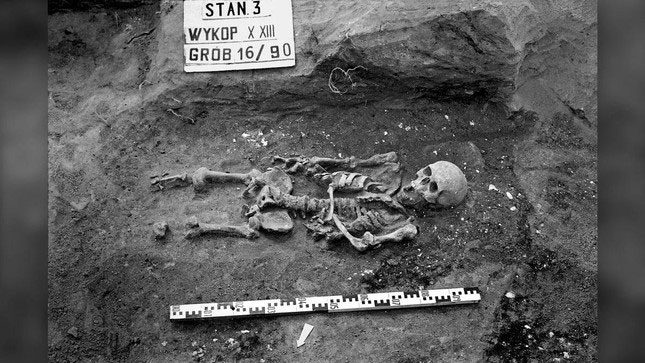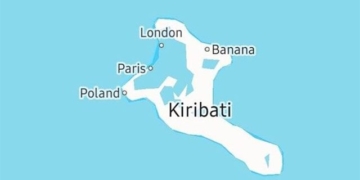Archaeologists in Poland, while excavating a cemetery next to a monastery, uncovered the remains of a medieval man suffering from two different forms of dwarfism, a rare condition not previously observed in ancient skeletons.
The cemetery is located in the small village of Łekno, in western central Poland. Today, Łekno has only a few hundred residents, but from the 9th to the 11th centuries, it was a fortified town with a small domed church near the center. In the 12th century, the Cistercians—a Catholic monastic order comprising monks and nuns—established a monastery in the town. Around 1450, the cemetery was founded, where both monks and local residents were buried until the 16th century.

Remains of a medieval man suffering from two different forms of dwarfism.
When archaeologists began excavating the monastery cemetery in 1990, they discovered over 400 graves, including the remains of a man designated Ł3/66/90. Carbon dating of the skeleton indicates that this man lived between the 9th and 11th centuries.
Upon a recent detailed examination of the skeleton, Matczak and her colleagues made another fascinating discovery: the man had multiple osteochondrodysplasia, a genetic condition that can affect the development and shape of bones, cartilage, muscles, tendons, and ligaments. Notably, the man may have had two different forms of dwarfism.
By creating 3D models, the researchers were able to focus their investigation on the unusual shapes of certain bones. The asymmetrical skull, narrowed spinal canal, short ribs, and flared hip bones are among the findings suggesting chondrodysplasia, a condition where an individual has very short arms and legs, with a medium-sized torso that is larger than average.
Additionally, based on the man’s outwardly turned elbows and high, curved palate, Matczak and her team identified that he suffered from a rare condition known as Léri-Weill dyschondrosteosis (LWD).
Francesco Galassi, a paleontologist at Flinders University in Australia who was not involved in the study, noted that these two conditions are known to coexist in contemporary patients, but no evidence from ancient skeletons had been presented until Matczak’s research.
Matczak and her colleagues’ current plan is to gain a deeper understanding of the life and death of this medieval man. Matczak stated: “He was buried without any grave goods, but in a typical grave, indicating a proper commemoration after his death. Depending on whether the man was a layperson or a monk, his life could vary significantly according to his genetic condition. The monastery was a place that included more for those who differed physically from the secular world, with greater material demands to meet their needs as a husband and father.”
The researchers are investigating the man’s diet using carbon and nitrogen isotope analysis, with results that may also help the team refine their estimates of when the man lived.




















































